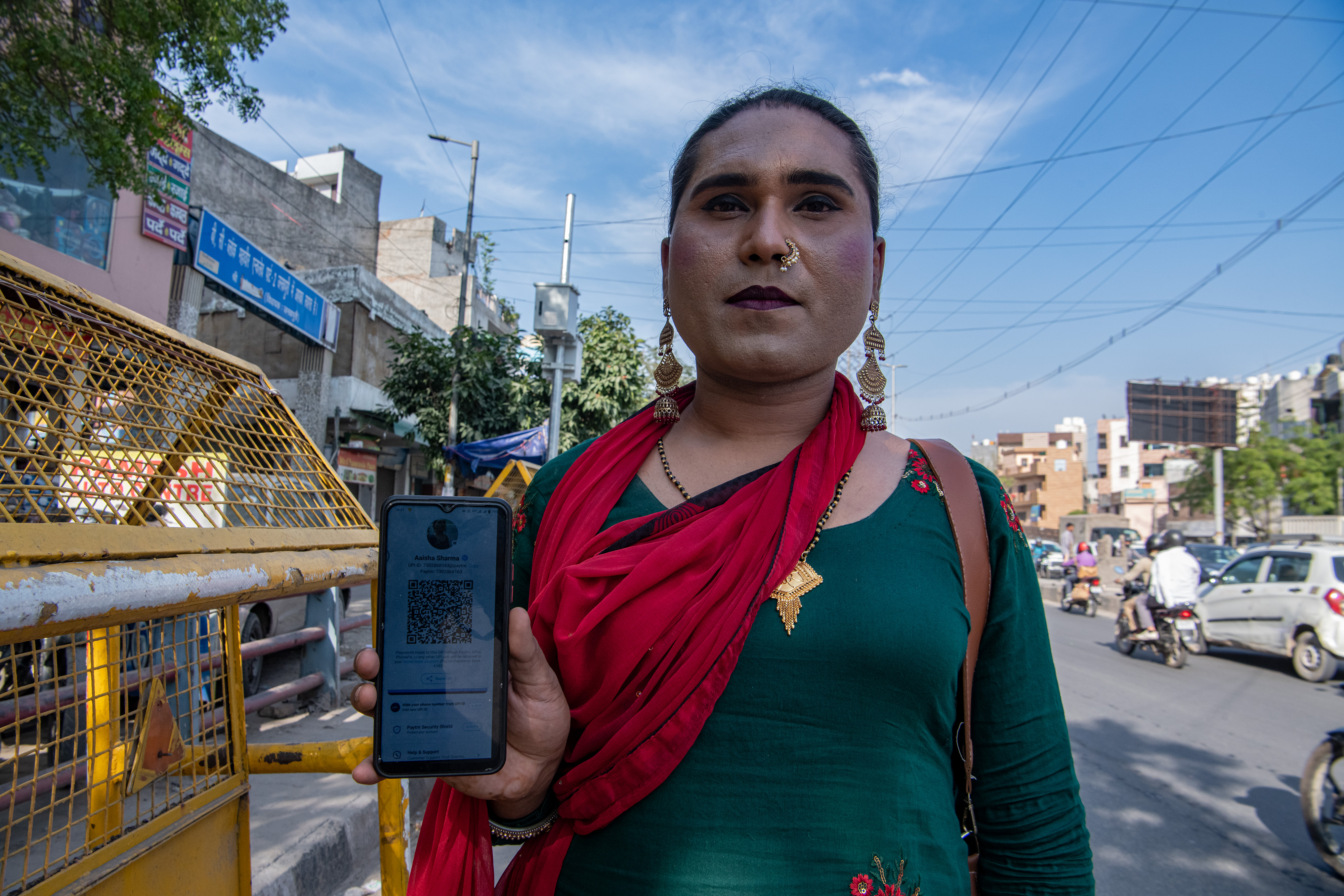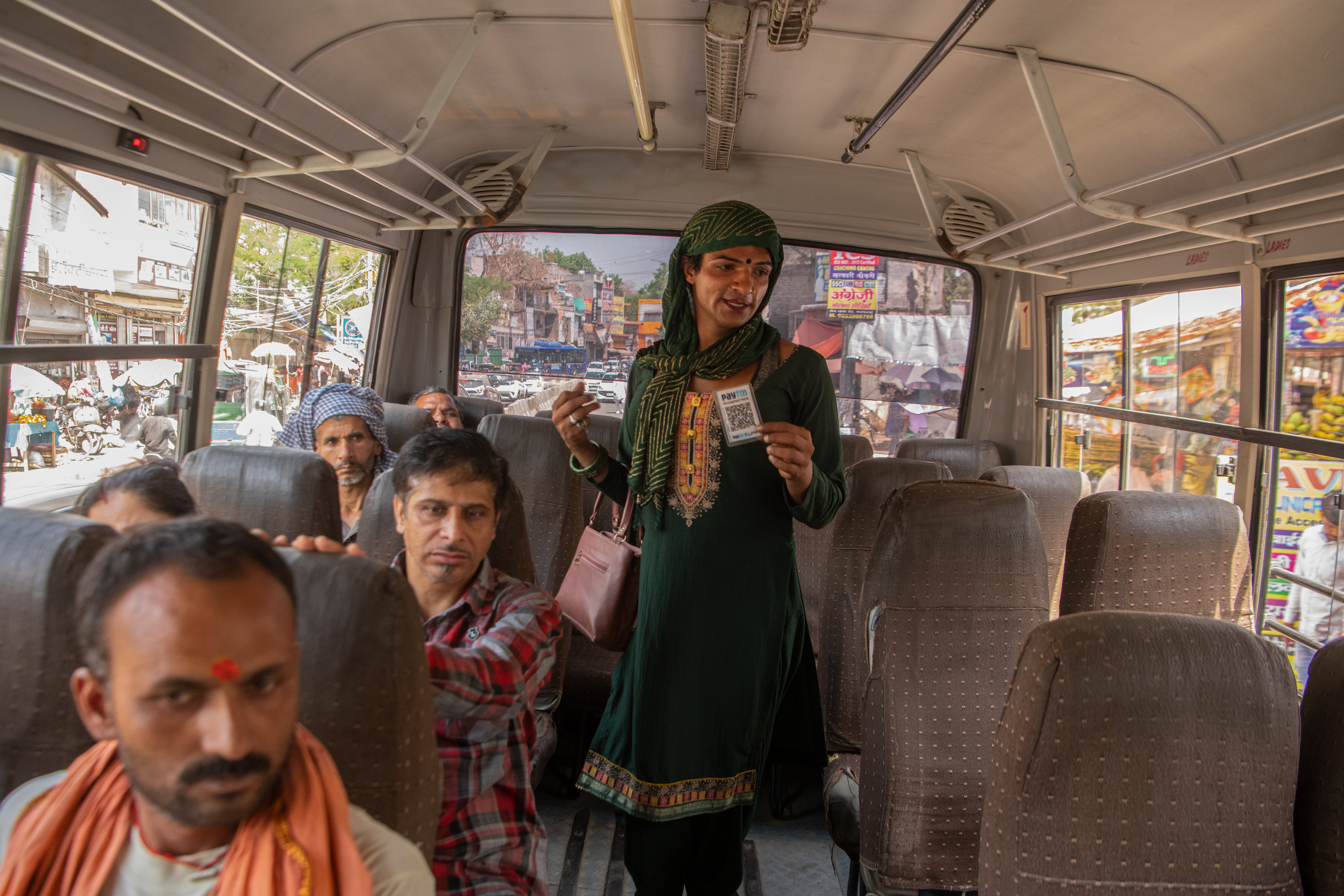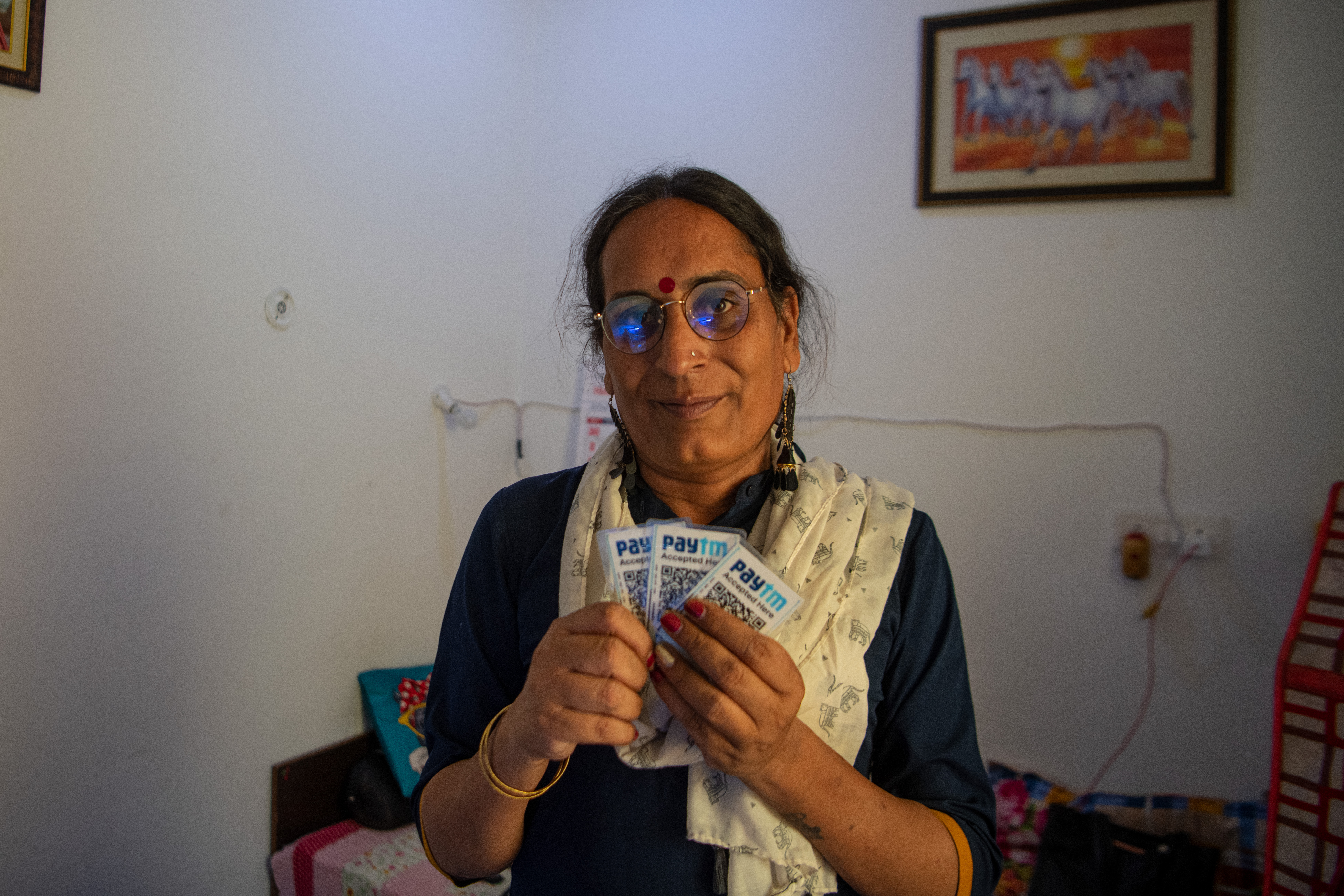
At a traffic signal in the Indian capital, Ayesha Sharma, a 29-year-old transwoman dressed in a traditional tunic and pants with scarf, holds up a smartphone with a QR code on it as the signal flashes crimson and vehicles come to a stop. A commuter scans the code and her account is deposited with 10 rupees ($0.12), an easy addition to her panhandling.
The rise in digital transactions and instant payment interfaces like the one used by Sharma, are helping marginalised communities like transgender people in managing their finances.
A beggar on New Delhi’s streets since 2006, Sharma has routinely faced prejudice and jeers. Since she has started asking for money using her smartphone, just the wonder factor of that has helped reduce some of that commentary that in the past tried to shame her, she said.
It has also encouraged people to give her money even when they do not have small change and today, about a quarter of her earnings are through the digital mode, she said.
“It is so much easier now. Even though people are not always carrying cash, they can still donate to us by just scanning this code,” Sharma told Al Jazeera.
“We may be beggars, but we should still be treated with respect and decency,” she said and digital transactions have so far spared them from visiting banks where they frequently encounter prejudice and discrimination.
The Indian government has been trying in the past few years to boost digital transactions over cash, including through policy measures like the so-called demonetisation in November 2016 that wiped out overnight nearly 90 percent of the cash in circulation, and led to an immediate spike in the use of payment apps.
The pandemic, too, helped push digital transactions and some of those habits have continued and co-exist with the use of cash which is back to being the preferred mode of payment in the country.
Digital transactions work in a couple of ways.
There are apps that link to a person’s bank account and money is immediately withdrawn directly from the account when a payment is made.
Then there are payment apps from companies that link to an account a user has created with the company, or can be linked to a wallet that the company offers, which the user loads to use like a pre-paid card.
Leeza Khan, a 30-year-old transgender woman and beggar from the northern city of Meerut, gets at least 20 percent of her daily earnings through digital transactions.
A graduate of class 10, Khan was abandoned by her family when she disclosed her new identity. Since then she has been begging on Delhi’s streets, in buses, and even at weddings to make ends meet.
Khan carries a QR code that people can scan to send money to her directly, bringing her about 400 rupees ($4.81) to 500 rupees ($6.01) every day.

It is also helping other urban poor like Amri, a 23-year-old who sells flowers at traffic signals in the Indian capital. She lives on the road and makes between 200 rupees ($2.41) and 300 rupees ($3.61) every day, with about 70 rupees ($0.84) to 80 rupees ($0.96) or so coming from digital payments.
Bureaucratic hurdles
However, even though digital payments have helped transgender beggars, it is not a perfect solution.
At least some transgender people have struggled to open regular bank accounts or update their gender identity on existing accounts, even though India’s central bank issued a directive as far back as 2015 that banks should recognise the third gender.
Khan, for instance, doesn’t have a regular bank account as she does not possess a PAN card, a vital financial document issued by the Indian income tax department containing a 10-digit alphanumeric number that is used for banking and tax-related activities or an Aadhar card, a unique 12-digit identity number, both of which can be used open an account at any bank in India.
Khan can get a PAN or Aadhar card after she has registered as a third gender at a local government agency. She has tried once or twice, but the experience of strangers prying into her private life with invasive questions like “Have you always felt like this?” and what does her family say about her gender identity, what surgery has she undergone, does she have any proof of being a transgender, to cheap jokes, like why does she want a third gender when she already has one has scarred her and she has abandoned the process midway, she told Al Jazeera.
Adding a new challenge, companies offering digital payment accounts have now begun enforcing rules that customers must have a PAN or Aadhar card, which are part of their compliance or know-your-customer (KYC) processes.
As a result, Khan, who lives with other transgender people in a commune, does not have a digital bank account and instead uses the QR code linked to the head of the commune, to whom she pays a commission from her earnings.
Rudrani Chhetri, founder of Mitr Trust which works with transgender people, said that a lot more transgender people had been using payment apps “without even considering whether they were eligible to receive the service or not. However, because KYC is now necessary, many people are experiencing issues with their names and bank accounts,” she said.

Swati Maliwal, chairperson of the Delhi Commission for Women, said that just 76 new certificates identifying people as third gender have been created in the previous three to four years, despite the fact that 5,000 identified as transgender in Delhi as of the 2012 census, and that figure has since increased.
“What do these 76 certifications mean? Are transgender people invisible in this political system? I believe that to be the case. Both the state and the federal governments are responsible [for this],” she said.
Maliwal points out that transgender people face harassment while applying for identification certificates. “Government officials target their families in their searches, asking who gave birth to transgender people. They are subjected to derogatory language,” she said.
For now, payment apps have given Sharma and other transgender beggars a chance to more effectively raise money.
Digital banking is an important tool that helps keep transgender and other minorities safe and secure because they frequently live in precarious and uncertain situations, said Chhetri. “It has become essential for their wellbeing to have a mechanism in place to keep and manage their money … [But] the challenging part is having a bank account and meeting the qualification criteria for the service.”







